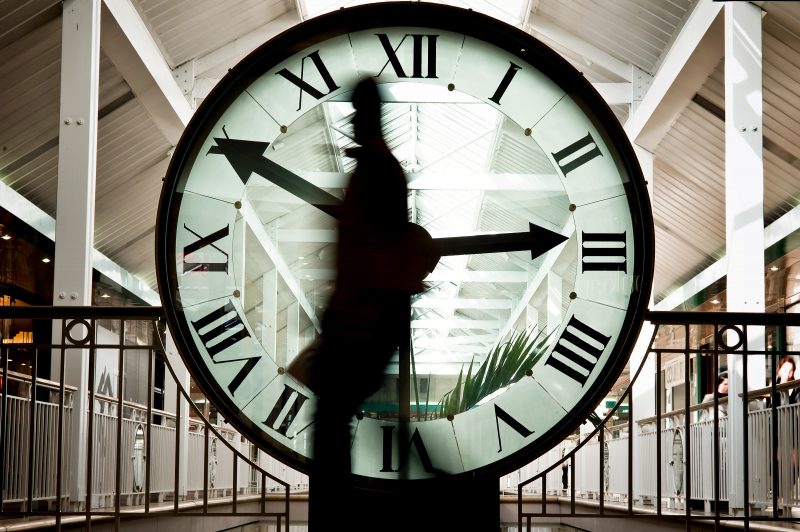ECB sticks to wait-and-see course as external threats persist
“The ECB has no reason to rush (with more supportive measures) but every reason to play for a little more time,” says Frederik Ducrozet, a strategist at Pictet Wealth Management (Jeff PACHOUD)
Frankfurt am Main (AFP) – Beset by looming political risks and weaker global growth weighing on the eurozone, the European Central Bank played for time Wednesday on multiple fronts in hopes of a clearer picture in June.
ECB president Mario Draghi told reporters in Frankfurt, “right now, it’s too early to decide” on various forms of aid to banks that could help the single currency bloc through a persistent soft patch, adding that “it was not an operational meeting”.
Policymakers had earlier decided to keep supportive measures intact.
Interest rates will stick at historic lows until at least the end of this year and the central bank will maintain reinvestments of its 2.6-trillion-euro ($2.9 trillion) stock of government and corporate bonds, in line with analysts’ expectations.
The central bank’s decision to mark time comes just hours ahead of a new crunch Brussels summit on Brexit and in the same week US President Donald Trump announced billions of dollars of tariffs on European goods.
Draghi declared himself “still hopeful” the EU’s 27 leaders and Prime Minister Theresa May could avoid a chaotic no-deal departure from the bloc for Britain.
And he recalled that “between words and deeds there is often a big gulf” in response to Trump’s border tax tweet.
But “even the fact that these threats are being vented with some frequency is certainly undermining general confidence,” he allowed.
“The ECB remains on high alert” but “seems to need more time” to work out its policy response, ING bank economist Carsten Brzeski commented.
Nevertheless, Draghi insisted that “we’ve shown we have plenty of instruments’ to respond if the eurozone’s malaise worsens.
– Playing for time –
April’s ECB meeting was brought forward by a day to avoid clashing with an International Monetary Fund gathering.
The Washington-based IMF on Tuesday downgraded its growth outlook for the eurozone, cutting its 2019 forecast to 1.3 percent — slightly higher than the ECB’s 1.1-percent estimate.
Germany and Italy account for much of the expected slowdown, with export-oriented Germany labouring under the effects of a slump in global trade and Italy expected to stagnate owing to high debt levels and muted domestic demand.
“Monetary policy should continue to remain accommodative” in the eurozone, and aim to lift inflation off present levels that are “well below target”, the IMF urged in its quarterly forecast.
Eurozone central bankers also slashed their price growth predictions last month, seeing inflation rising from just 1.2 percent this year to 1.6 percent in 2021 — still short of the ECB goal.
“We remain fully committed to return inflation to just below 2.0 percent without undue delay,” Draghi said Wednesday.
The Italian economist also highlighted “underlying strength” in the economy and an “unwinding” of temporary factors that have weighed on expansion and price growth since late last year.
But he acknowledged that “risks surrounding the euro area growth outlook remain tilted to the downside” — echoing the message he sent in March that the central bank’s ability to neutralise external threats was limited.
– Help for banks –
At that gathering, policymakers decided on a new round of cheap loans to banks known as TLTROs to begin in September, designed with a system of incentives to keep lenders funnelling cash into the wider economy.
Draghi said Wednesday details of the low-cost loans “will be communicated at one of our forthcoming meetings”, suggesting too that a worsening of the economic outlook could mean more favourable conditions.
Meanwhile he disappointed hopes from the banking sector for a concrete announcement on relief for the costs they suffer from the ECB’s negative deposit rate.
With the rate set at -0.4 percent, lenders pay the Frankfurt institution a total of around 7.5 billion euros per year to park extra cash there.
Observers have speculated the central bank could copy Switzerland by introducing a “tiering” system to charge only a fraction of deposits the harshest negative rate.
“We want to analyse the side effects” before announcing any “mitigating measures”, Draghi said, carefully avoiding the specific word “tiering”.
But he acknowledged that sparing banks the worst effects could be read by markets as a sign that rates will remain lower for much longer than currently acknowledged — thus blurring ECB messaging about its overall policy.
In the months ahead, “the ECB will try to hear the economic grass growing” before taking new steps, economist Florian Hense of Berenberg bank said.
Only a still weaker outlook could prompt it to opt for tiering or push back the time horizon for hiking rates, he predicted.
Disclaimer: Validity of the above story is for 7 Days from original date of publishing. Source: AFP.


